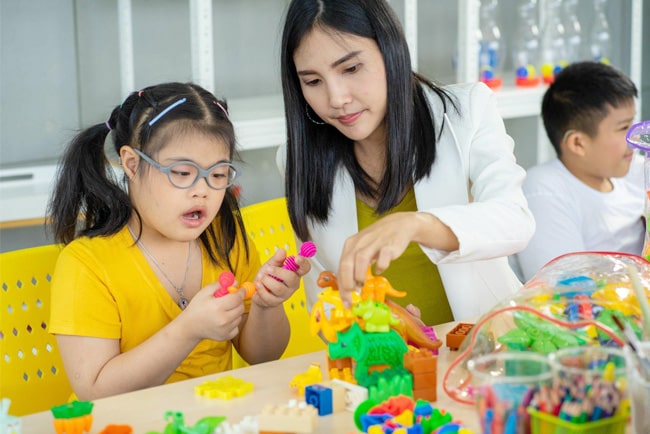
Teaching students with special needs requires a unique approach and a deep understanding of their individual challenges and learning styles. As an educator, it is essential to create an inclusive and supportive classroom environment that empowers these students to reach their full potential.
In this comprehensive guide, we will explore effective strategies and tips for teaching students with special needs. From understanding common learning disorders to adapting teaching strategies, we will provide practical insights to help you create an inclusive and successful learning experience for all students.
Understanding Common Learning Disorders
Before diving into effective teaching strategies, it is crucial to have a solid understanding of the common learning disorders that you may encounter in your classroom. While there are various disorders that can affect cognitive ability and hinder learning, we will focus on three prevalent ones: autism, dyslexia, and ADHD.
Autism
Autism, or autism spectrum disorder (ASD), encompasses a range of conditions characterized by social skill challenges, repetitive behaviors, speech difficulties, and nonverbal communication barriers. Students with autism often have a developmental disability that affects their ability to communicate verbally and non-verbally, as well as their social interactions. While they may appear similar to their peers at first glance, symptoms of autism become more apparent during social activities and interactions that require communication and socialization.
Dyslexia
Dyslexia is a learning disorder that primarily affects reading skills. Individuals with dyslexia have difficulty identifying speech sounds, understanding their relationship to letters and words (decoding), and processing language. While they may struggle with reading, individuals with dyslexia can still comprehend written material. However, they may have challenges with spelling words they have read previously.
ADHD
Attention-deficit/hyperactivity disorder (ADHD) is a neurodevelopmental disorder characterized by inattention, hyperactivity, and impulsivity. Students with ADHD often exhibit a pattern of ongoing inattention and/or hyperactivity-impulsivity that interferes with their functioning and development. They tend to be hyperactive, which may disrupt the order and flow of the classroom. Additionally, students with ADHD typically have a short attention span, making it challenging for them to focus on tasks that do not captivate their interest.
It is important to note that while these disorders affect different aspects of cognitive function, it is not uncommon for individuals to have overlapping disorders. Each student is unique, and understanding their specific needs will help you tailor your teaching strategies effectively.
Strategies for Teaching Students with Special Needs
Now that we have a foundational understanding of common learning disorders, let’s explore practical strategies and tips for teaching students with special needs.
These strategies will help you create an inclusive and supportive learning environment that facilitates their educational growth and success.
1. Foster Patience and Understanding
Patience is an essential quality for teachers working with students with special needs. These students may require additional time and repetition to grasp concepts fully. Be prepared to repeat instructions and explanations multiple times in various ways to ensure understanding. It is also important to be mindful of their short attention spans and difficulties with reading and adapt your teaching methods accordingly. Patience and understanding will go a long way in creating a positive and supportive learning environment.
2. Observe and Adapt
Each student with special needs is unique, and it is crucial to observe their individual strengths, weaknesses, and learning styles. By understanding their specific needs, you can adapt your teaching methods to accommodate their learning preferences. Flexibility is key in tailoring your approach and addressing challenges that may arise. By adapting your teaching style, you can create an environment that maximizes their learning potential.
3. Utilize Positive Reinforcement
Positive reinforcement is a powerful tool for motivating and encouraging students with special needs. Recognize and celebrate their accomplishments, no matter how small. Provide verbal praise, rewards, or other forms of positive reinforcement to reinforce their efforts and progress. By focusing on their achievements, you can boost their self-esteem and create a positive association with learning.
4. Promote Inclusion and Discourage Prejudice
In an inclusive classroom, it is essential to foster an environment of acceptance and respect. Educate your students about the importance of inclusion and discourage any acts of prejudice towards their peers with special needs. Encourage empathy, kindness, and understanding among all students. By promoting inclusivity, you create a harmonious and supportive classroom community.
5. Avoid Activities That May Cause Humiliation
To protect the self-esteem of students with special needs, it is crucial to avoid any activities that may lead to humiliation or embarrassment. If a student struggles with a particular task, find alternative ways for them to participate without compromising their self-confidence. By creating a safe and non-judgmental environment, you encourage their active engagement and foster a positive attitude towards learning.
6. Speak Kindly and Caringly
The way you communicate with students with special needs plays a significant role in their overall experience in the classroom. Speak in a kind and caring manner, using a gentle tone of voice. This approach creates a sense of safety and security, allowing students to feel comfortable and open to learning. Building trust through compassionate communication establishes a positive teacher-student relationship and enhances their willingness to follow instructions.
7. Differentiate Instruction
Differentiating instruction is crucial when teaching students with special needs. Recognize their individual learning styles and adapt your teaching methods accordingly. Provide various modalities of instruction, such as visual aids, hands-on activities, and auditory cues, to cater to diverse learning preferences. By accommodating their needs, you create an inclusive learning environment where all students can thrive.
8. Collaborate with Support Services
Collaborating with support services, such as special education teachers, speech therapists, and occupational therapists, can provide valuable insights and resources for effectively teaching students with special needs. These professionals can offer guidance, strategies, and specialized interventions to support your teaching efforts. By working together, you can create a comprehensive and holistic approach to meeting the needs of students with special needs.
9. Utilize Assistive Technology
Assistive technology can be a powerful tool in supporting students with special needs. Explore available assistive technologies, such as text-to-speech software, speech recognition tools, and adaptive devices, to enhance their learning experience. These tools can help bridge the gap between their abilities and the curriculum, allowing them to participate more fully in the learning process.
10. Provide Clear Structure and Routine
Students with special needs thrive in structured and predictable environments. Establish clear routines and expectations to provide a sense of security and stability. Clearly communicate daily schedules, learning objectives, and behavioral expectations. Visual aids, such as charts, calendars, and checklists, can help students understand and follow the established structure. A consistent and organized classroom environment promotes optimal learning for all students.
11. Encourage Peer Collaboration and Support
Peer collaboration and support can greatly benefit students with special needs. Foster opportunities for inclusive group work, where students can learn from and support one another. Implement activities like think-pair-share, where students reflect individually, discuss their thoughts in pairs, and share their ideas as a group. Encouraging peer collaboration helps build social skills, teamwork, and empathy among all students.
12. Regularly Assess and Provide Feedback
Regular assessment and feedback are essential for monitoring students’ progress and identifying areas that require additional support. Implement formative assessments, such as quizzes, observations, and portfolio assessments, to gather ongoing feedback on their learning. Provide constructive feedback that highlights their strengths and areas for improvement. Individualized feedback and support can help students with special needs develop their skills and build confidence.
Conclusion
Teaching students with special needs requires a compassionate and adaptive approach. By understanding the common learning disorders they may face and implementing effective strategies, you can create an inclusive and supportive learning environment. Foster patience, adapt teaching methods, utilize positive reinforcement, and promote inclusivity. By embracing the unique needs of each student and collaborating with support services, you can empower students with special needs to thrive academically and personally. Remember, your dedication and commitment to their success can make a significant difference in their educational journey.
















